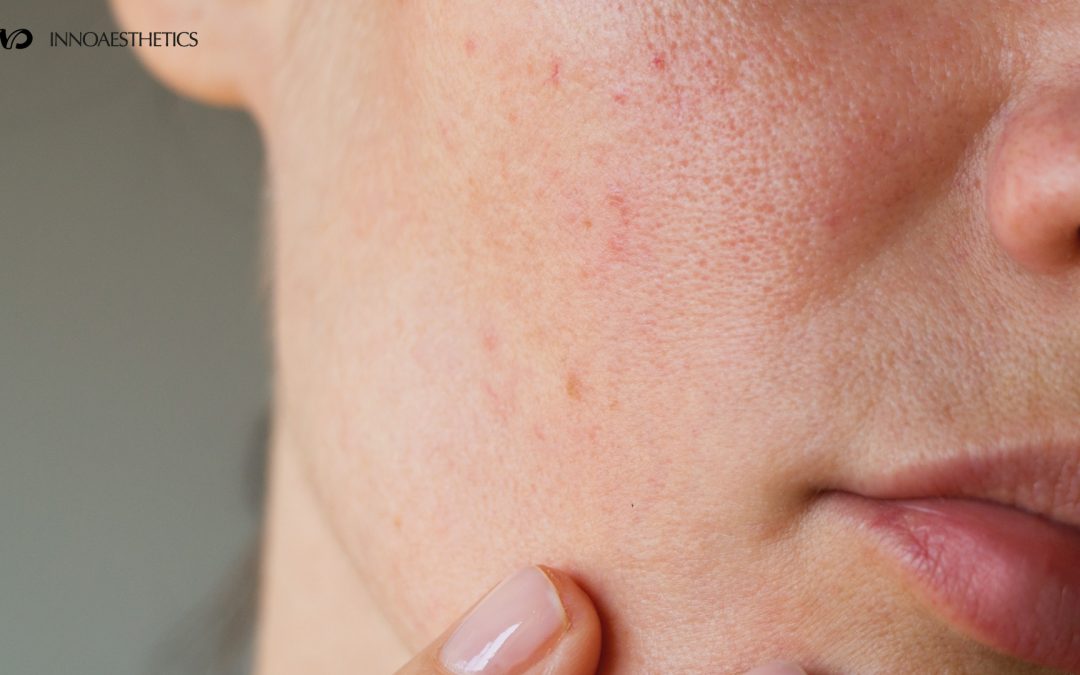Does your skin look unusually red? Is it exceptionally dry and tight? Even worse, do you notice some ugly red spots and spider-like webs buried underneath your skin? You could have a skin condition known as Couperose skin. Here’s what you need to know about Couperose and how it’s treated.
WHAT IS COUPEROSE?
Couperose skin is a condition where redness appears due to small, dilated red blood vessels visible on the face. Couperose occurs due to poor elasticity of the capillary walls. Alongside these visible blood vessels, people with Couperose may also have red spots on their face as well as burning and stinging skin.
People often wonder what’s the difference between Couperose and Rosacea. Rosacea is a chronic and worse skin condition; while Couperose appears as localized redness in specific areas, Rosacea is associated with permanent redness.
WHAT CAUSES COUPEROSE?
Often this is hereditary; skin that is structurally thin and sensitive with weak capillary walls will contribute to Couperose skin, but also your environment. People exposed to harsh cold, windy, or extremely hot weather, can also contribute to the condition. Besides abrupt temperature changes, other factors such as smoking, alcohol consumption, stress, sunburn, consumption of corticosteroids, and menopause can cause it.
HOW TO TREAT COUPEROSE?
INNOAESTHETICS has developed a treatment to improve redness-prone skin and Couperose. It comprises four sessions in-office at 7-day intervals and a skincare regime at home.
This treatment aims to enhance skin resistance and stimulate the defenses and reparative mechanisms of the skin barrier. It deeply moisturizes, improves microcirculation, reduces skin tightness, burning sensation, and erythema, thus preventing Rosacea.
The laboratory provides professionals with two protocols for in-office treatment—a standard protocol; and an intensive one for more severe cases. Your professional will select the treatment that’s best for you, according to your specific needs and skin tolerance.
In-office, the professional will apply a chemical peel and a transdermal solution. A home, you will have to use a face moisturizer with calming properties once or twice a day for a minimum of 3 months.



So, don’t continue to suffer from unpleasant sensations such as stinging, burning, and embarrassing red skin.
OTHER CONSIDERATIONS
- It’s usually fair-skinned people who are more prone to Couperose.
- Females tend to be more at risk for Couperose skin than males.
- To prevent getting Couperose, try to avoid being exposed to abrupt changes in temperature.
- Use sunscreen year-round, even in winter.
- It’s important to treat skin redness early before it leads to Couperose skin or Rosacea.
- Check with your dermatologist or physician if you believe you have Couperose skin. This is so that other conditions, such as eczema that have similar symptoms can be ruled out.
If you want to learn more about our solutions for chronic redness and Couperose skin, click on: /professional-use/dermatology/facial-redness-rosacea/.


